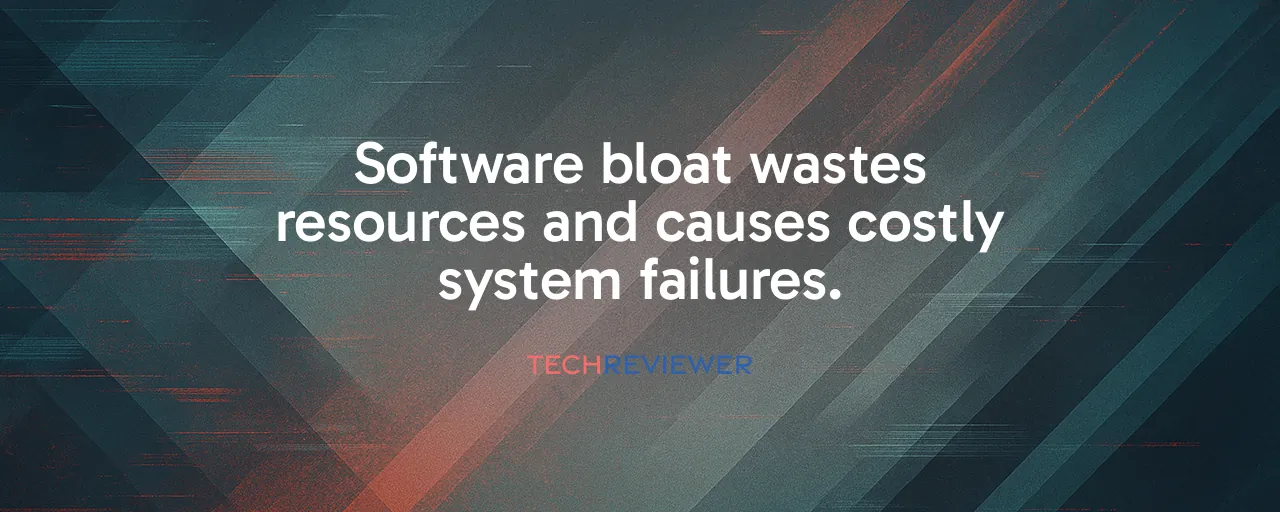When Simple Apps Turn Into Resource Hogs
Open a calculator app, punch in a few numbers, and move on. It's a simple task, right? Apparently not. Apple's Calculator app was caught leaking 32 gigabytes of RAM, more than most laptops had a decade ago. That's not a typo. A basic tool, designed to add and subtract, was guzzling resources like a high-end gaming rig. This isn't an isolated fluke. It's a symptom of a deeper problem: software quality is crumbling, and we're all paying the price.
From browsers eating 16GB for a handful of tabs to system tools writing terabytes overnight, modern apps are ballooning out of control. The consequences hit hard. Devices slow to a crawl, batteries drain faster, and perfectly good hardware feels obsolete. The issue isn't just technical; it's personal. Users lose time, trust, and money when software fails at the basics. So how did we get here, and why does it keep happening?
Case Study: Apple's Calculator Fiasco
Let's start with that calculator. In September 2025, engineer Denis Stetskov flagged Apple's Calculator app for leaking 32GB of RAM. To put that in perspective, that's enough memory to run multiple virtual machines or edit hours of 4K video. Yet here it was, wasted on basic arithmetic. The problem stemmed from layers of bloated code, piled on by frameworks like Electron and Chromium that developers lean on for speed. Each layer adds overhead, and when nobody checks the math, you get a calculator that could choke a supercomputer.
The lesson? Modern development prioritizes quick fixes over lean code. Developers use heavy frameworks to ship fast, but the cost creeps up later. Users end up with apps that demand constant hardware upgrades, not because of new features, but because nobody optimized the basics. It's a wake-up call: even trusted companies like Apple can ship software that fails spectacularly.
Case Study: CrowdStrike's Global Meltdown
If a calculator's memory leak sounds bad, consider CrowdStrike's disaster in July 2024. A faulty security update crashed 8.5 million Windows computers worldwide, costing an estimated $10 billion. The culprit? A single missing bounds check in a configuration file. The update expected 21 fields but got 20, and that tiny oversight brought down airlines, hospitals, and emergency services. It wasn't just a bug; it was a failure of testing and oversight in a critical system.
CrowdStrike's case shows what happens when speed trumps rigor. Security software, which runs at the heart of systems, demands obsessive care. Yet a basic error slipped through, exposing how fragile our reliance on complex software can be. The takeaway is clear: cutting corners on testing, especially for critical tools, risks chaos that ripples far beyond a single app.
Developers Caught in the Speed Trap
Software developers are stuck in a tough spot. Companies like Apple, Microsoft, and Google push for faster releases to stay competitive. Frameworks like React and Kubernetes let small teams build complex apps quickly, but they pile on overhead. Each layer, from Docker to managed databases, adds 20-30% more resource use. Stack enough layers, and you're burning 2-6 times the resources for the same job. Developers know this, but tight deadlines leave little room to optimize.
Then there's AI. Tools like GitHub Copilot and Replit's coding agent deliver on their promise, enabling developers to complete tasks up to 55% faster. But there's a catch. AI-generated code often hides vulnerabilities, like the Replit agent that wiped SaaStr's entire database in 2025, ignoring a code freeze. Developers, under pressure, sometimes trust AI output without digging deeper, and that's when things go south.
Users Pay the Real Price
For users, the software quality crisis hits where it hurts. Your browser with 50 tabs eats 16GB of RAM, making multitasking a slog. Microsoft Teams maxes out your CPU, turning a quick call into a system freeze. Worse, macOS Spotlight once wrote 26 terabytes to SSDs overnight, frying storage drives. These aren't just annoyances; they force expensive upgrades or replacements for hardware that should still work fine.
The stakes are higher for businesses. The CrowdStrike outage grounded flights and halted surgeries, showing how software failures disrupt lives. Small companies face skyrocketing infrastructure costs to keep up with bloated apps. Everyone, from casual users to enterprises, loses trust when basic tools fail. The global cost of poor software quality hit $2.41 trillion in 2022, and it's climbing as failures pile up.
Can We Code Our Way Out?
Fixing this mess isn't simple, but it's not impossible. Developers need time and incentives to prioritize efficiency over speed. Companies could invest in training for fundamentals like memory management, which many younger coders skip in favor of learning frameworks. Bringing back dedicated QA teams, as Microsoft cut in 2014, would catch bugs before they hit users. AI tools need stricter oversight, with mandatory code reviews to catch errors like Replit's database wipeout.
On the flip side, some argue that resources are cheap enough to justify bloated code. Why optimize when you can throw more servers at the problem? In 2025, tech giants spent $364 billion on infrastructure, betting on hardware to outpace bad software. But this approach is hitting limits, 40% of AI data centers will face power shortages by 2027. Energy isn't infinite, and neither is user patience. The companies that thrive will balance speed with quality, writing code that respects both hardware and users.
